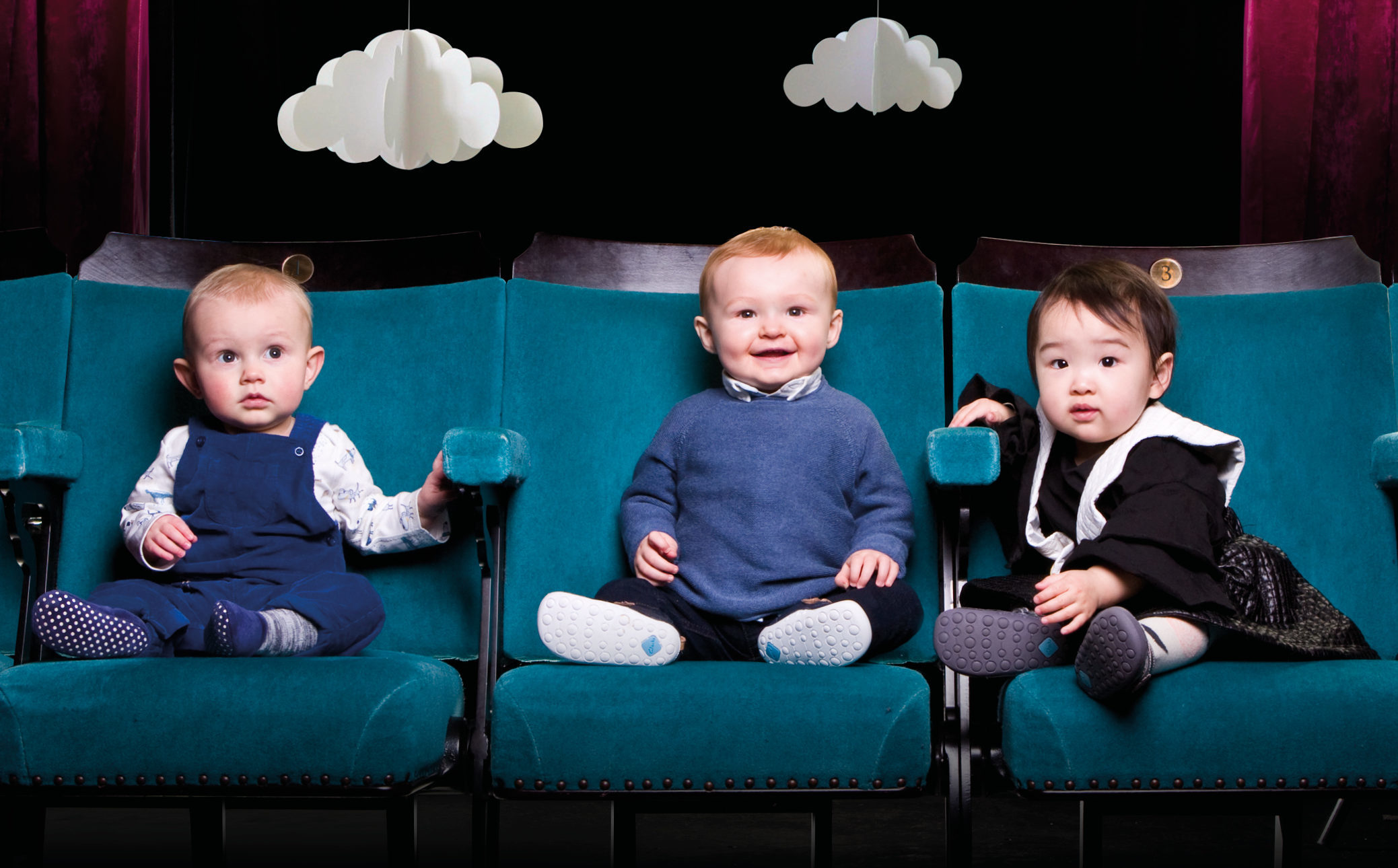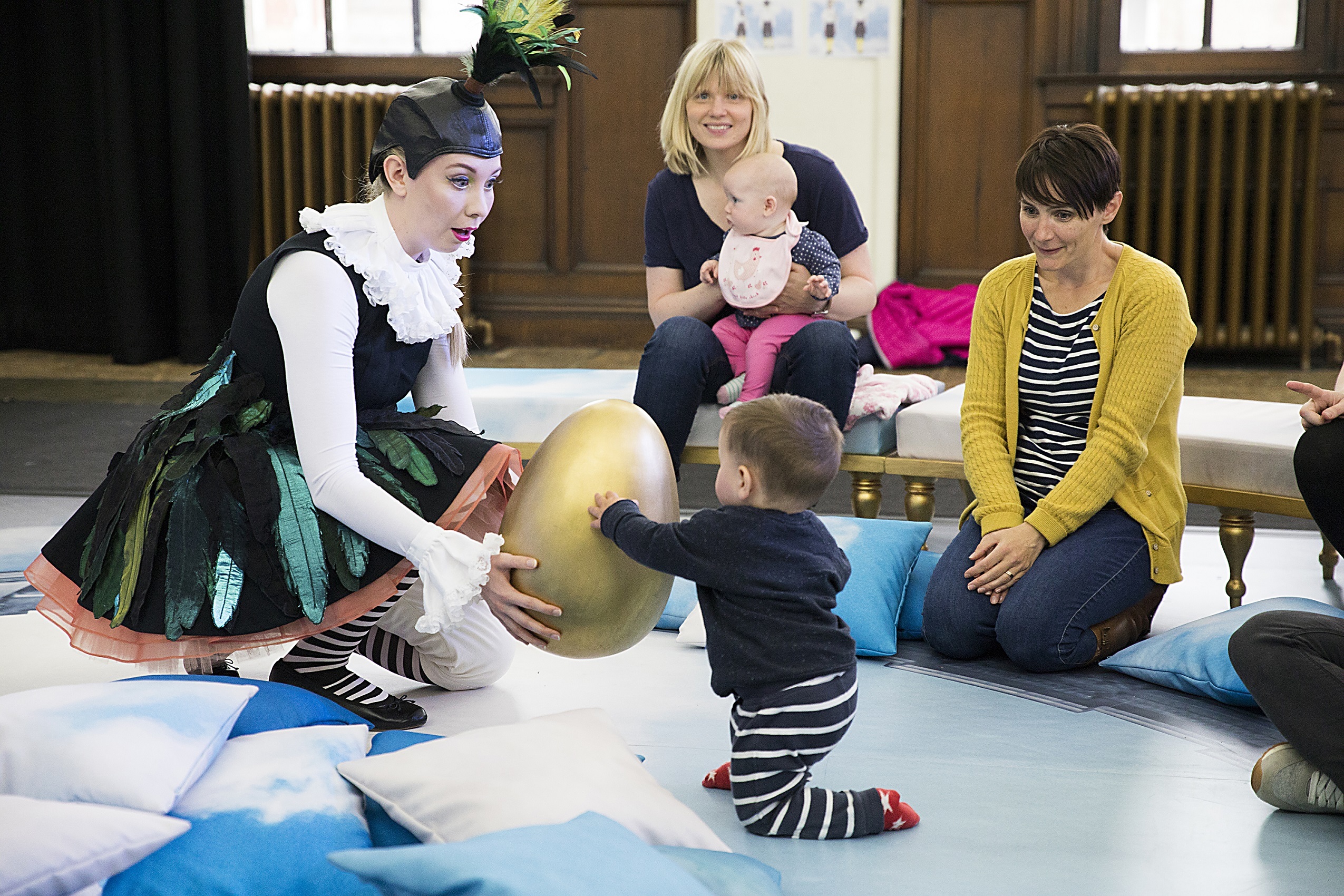
ACADEMICS from one of America’s leading universities are to study a pioneering Scots opera for babies.
Bambino – which is aimed at little ones aged between six and 18 months – is to be performed at the world-famous Metropolitan Opera on Broadway following successful performances at home.
Researchers from Columbia University will study the impact of the unique Scottish Opera show on young audience members and how they respond to it.
It’s an exciting development for Bambino’s writer, former composer-in-residence at Scottish Opera, Lliam Paterson.
“I was in the Met Opera building last year and I stood in the foyer and thought how brilliant it would be to one day have something performed here – and now it’s going to happen,” said Lliam, from Aberdeen.
“There’s something joyous about bringing a high art form – maybe not the most approachable of art forms – to very young children.
“Many of the parents had never been to the opera, some hadn’t been to the theatre, so it’s quite unique that a parent and baby can enjoy a first experience together.”
Bambino is part of a research project between The Metropolitan Opera’s education team and Teachers College at Columbia.
Leading academics Prof Susan Recchia, who is a specialist in infant development, and Prof Lori Custodero and Nita Baxani, both experts in early childhood music education, will lead the study.
The research will focus on the ways individual toddlers respond to the opera.
Bambino was performed at the Edinburgh Fringe last year to acclaim and is currently in Paris. It will then go to New York from April 30 to May 5.
The opera, directed by Phelim McDermott and designed by Giuseppe and Emma Belli, is performed by two actors and features two live musicians.
There is no stage. Instead, the performance is on the floor, the actors interacting with the nappy-wearing audience.
“We knew from the start we needed real closeness between the babies and performers,” Lliam said.
“It had to be quite tactile and take into account how far babies could see and hear.
“It’s interesting to watch how babies respond to an operatic voice.”
Lliam was approached by Jane Davidson, the director of outreach and education at Scottish Opera, to write the opera for babies.
“I hadn’t thought about writing opera for such a young audience but then I realised it was a brilliant idea because we are never too young to start listening to music, especially classical. In fact, the younger the better.
“Phelim and I brainstormed what it would look like. We knew it had to be in a world that babies would recognise, so we decided on something bright, a journey from earth to sky, and then thought about birds.
“After a week of workshops we tried out the ideas on 10 babies and parents and had good feedback. It confirmed we were on the right path and the responses have been completely positive since.
“For children so young there is not a lot in terms of theatre, so this is new ground.”
Bambino will again be part of the Edinburgh Fringe in August before going on tour in September, visiting Aberdeen, Inverness, Perth, Motherwell and Lerwick.

Enjoy the convenience of having The Sunday Post delivered as a digital ePaper straight to your smartphone, tablet or computer.
Subscribe for only £5.49 a month and enjoy all the benefits of the printed paper as a digital replica.
Subscribe